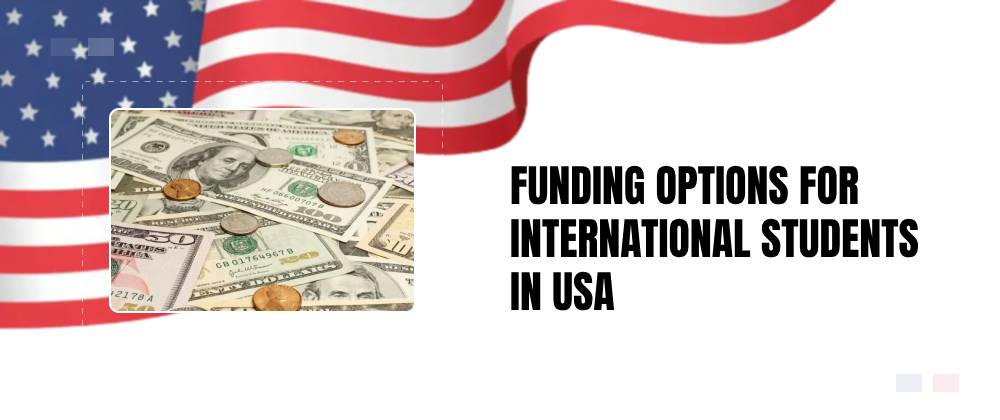How Much Does It Cost to Study in the USA from Nepal?

The prospect of securing a degree from an esteemed American university holds tremendous appeal for Nepalese students. With world-class infrastructure, pioneering research opportunities, and extensive support systems, USA remains a sought-after study destination.
Also read; Study in USA vs. Study in Canada
However, the financial implications of undertaking education in the United States can seem intimidating at first glance.
By understanding the comprehensive cost spectrum, funding avenues, and planning essentials, you can strategize your approach for this worthwhile investment in your future.
Also read; USA Study Guide for Nepalese Students
This guide delves into all the pertinent aspects to equip you with clarity on the overall costs, available options to finance your goals, and techniques to optimize your financial preparedness.
Also read: Why study MBA in the USA? Uncover the Top 7 Reasons
Understanding the Cost Spectrum (Cost to Study in the USA)
When estimating the total expenditure involved in studying in the US, you need to account for more than just the tuition fees. Factoring in living expenditures and other ancillary costs that can rack up allows you to create a detailed financial plan. Here’s a primer on the key elements that comprise your total budget:
Tuition Fees:
As a Nepalese student, you will likely pay the out-of-state tuition fee, which is typically higher. On average, tuition fees range from $20,000 to $55,000 per annum depending on variables like the program type, university reputation, and location. STEM courses and private universities tend to fall on the pricier end.
USA Scholarships For Nepalese Students in 2024
Living Expenses:
Managing living expenditures forms a significant portion of student budgets. Depending on the state and city, rent, food, transport, utilities and other costs can set you back $10,800 to $14,400 every year. Studying in larger metropolitan cities like Los Angeles and New York City can push up your living costs.
Additional Costs:
Aside from the two primary buckets of tuition and living costs, you need to account for other expenses like:
- Health insurance ($500 to $2,000 annually)
- Textbooks ($800 to $2000 yearly depending on program)
- Travel and commute ($2,000 to $4,000 for round-trip flights)
- Visa fees ($185 per application) and SEVIS fees ($350)
- Incidentals like phone bills, leisure activities, etc. (up to $2,000)
A Cost Breakdown
While giving blanket figures is challenging, conducting personalized estimates helps ascertain the outgoings unique to your situation. However, these ballpark estimates provide clarity on the general spectrum:
2 years Master’s program
- Tuition & Fees: $40,000 to $110,000
- Living Expenses: $21,600 to $28,800
- Additional Costs: $8,000 to $12,000
- Total Costs: $69,600 to $150,800
4 years Bachelor’s program
- Tuition & Fees: $80,000 to $220,000
- Living Expenses: $43,200 to $57,600
- Additional Costs: $16,000 to $24,000
- Total Costs: $139,200 to $301,600
As is evident, undertaking an undergraduate program in America requires intensive financial planning owing to a longer duration. Prioritizing part-time work opportunities can ease costs.
Exploring Funding Options
Funding your American education requires strategic planning. Here are some of the famous avenues students leverage:

Scholarships:
Hundreds of merit and need-based scholarship options exist at institutional, governmental, and organizational levels. These offset parts of your fees and expenses ranging from $500 to even complete tuition/room and aboard coverage.
Financial Aid:
US universities provide financial assistance to deserving international applicants covering 10% to 1000% of tuition costs via grants, waivers, and aid programs.
Part-time Work:
The F1 student visa permits working on campus for up to 20 hours weekly. Options like research assistantships and library staff roles usually pay $12 to $15 per hour.
Family Support and Personal Savings:
A realistic assessment of personal and familial financial capacities must govern your overall budget and choice of university. Having at least 30% to 50% of total costs available beforehand provides a buffer for unforeseen expenses.
Also read; Study in the USA From Nepal – List of Requirements
Strategizing for Financial Success: Essential Tips
While navigating costs can seem overwhelming initially, adequate preparation aids immensely. Here are key strategies for optimizing finances:
Commence planning early:
Start creating your financial blueprint at least 12 to 18 months in advance. This allows sufficient time to organize documentation, and research opportunities, and make adjustments if required. Early admission deadlines also demand proactive management.
Research scholarship opportunities:
Scrutinize funding databases, and university and external resources for securing scholarships well in advance of deadlines to offset tuition or expenses. Understand eligibility parameters thoroughly.
Also read; Undergraduate Scholarships in the USA
Explore work opportunities:
Clarity on F1 visa employment rules enables you to strategize work timelines that fit your schedule. On-campus positions also provide valuable professional development.
Budget meticulously:
Create reasonable monthly budgets factoring in living costs of the area, emergencies, and academic & leisure spending. Tracking expenditures against this diligently prevents overruns.
Seek guidance:
Connect with seniors who’ve studied in the US to learn from their experiences navigating costs. Consulting education specialists provide insights on structuring finances smartly as well.
How To Apply USA Student Visa From Nepal?
Benefits of Studying in the USA for Nepalese Students
While return on investment should govern the decision to study abroad, some intangible yet invaluable outcomes bolster your professional and personal progression significantly.

Academic Excellence:
Access to stellar faculty, research resources, diverse electives, and pioneering facilities pushes intellectual enrichment. Graduating from a globally reputed American institute signals competency.
How to Get a Scholarship in the USA From Nepal
Cross-cultural Exposure:
Interacting daily with a melting pot of ethnicities, beliefs, and outlooks inherently builds empathy, adaptability, and awareness—coveted soft skills in leadership roles.
Career Prospects:
Opportunities for international internships, networking, and career trajectory acceleration abound while studying in the US owing to a vast, well-connected professional ecosystem.
Independence and Growth:
Navigating a new country’s bureaucracies, social landscapes, and realities firsthand builds resilience, self-sufficiency, and discipline coveted by employers worldwide.
Cost to Study in the USA from Nepal – The Conclusion
Studying in the United States requires extensive financial planning and responsibility. However, by weighing costs against future earnings potential and intangible personal gains, undertaking higher education in the US remains a prudent investment for Nepalese students. Equipping yourself with robust money management know-how and exploring funding options aids immensely in materializing this dream.



